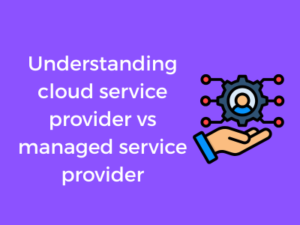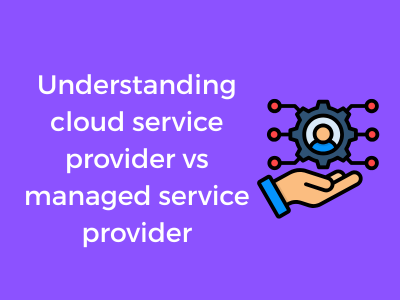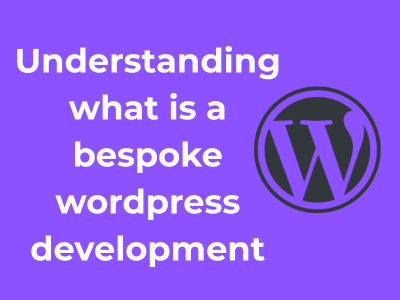Let’s kick things off by simplifying what cloud services are. At its core, cloud services are all about delivering computing services—like servers, storage, databases, networking, software, and analytics—over the internet. Instead of having to maintain your own bulky infrastructure on-site, you can tap into these resources remotely, on an as-needed basis. Sounds convenient, right? That’s because it is!
Think of it this way: cloud service providers (CSPs) are like those all-you-can-eat buffets. They set the spread, and you only pay for what you consume. The major players in this space—like Amazon Web Services (AWS), Microsoft Azure, and Google Cloud—provide an astonishing range of tools and services. Whether it’s hosting a website, running machine learning algorithms, or simply storing lots (and lots!) of data, there’s something for everyone.
What Makes Cloud Services So Special?
You might be wondering—why is everyone talking about the cloud these days? What’s so revolutionary about it? Well, here are some highlights:
- Scalability: Need more computing power because your website is suddenly booming with traffic? With cloud services, scaling up (or down) is just a few clicks away—no need to buy new hardware!
- Cost-Effective: You only pay for what you use, making this a budget-friendly approach. Say goodbye to overpaying for unused resources.
- Accessibility: Got an Internet connection? Then you’ve got access to your files, tools, and data—whether you’re at the office, home, or halfway across the globe.
- Reliability: Cloud providers prioritize uptime and backups. Even if your local infrastructure crashes, you can rely on cloud-based resources to keep the lights on.
- Innovation at Your Fingertips: If you’re looking to use cutting-edge tech, many cloud services offer pre-built AI, data analytics, and IoT tools ready to go, so you’re not building things from scratch.
But Is It Always that Simple?
Well, not quite. While the cloud is filled with candy-colored promises, you need to understand what you’re signing up for. Different providers come with unique strengths and weaknesses. Plus, setting up and optimizing cloud services might not always be intuitive for “non-techie” folks. Still, with proper planning, most businesses—from small startups to large enterprises—can make the cloud work to their advantage.
The Managed Approach: A Closer Look at Service Oversight
Imagine this: you’re running a business, and while cloud services handle your computing, you still need someone to oversee it all. This is where a Managed Service Provider (MSP) swoops in to save the day! Let’s explore what managed services are all about, how they work, and why they can be an absolute game-changer for your operations.
What Are Managed Services?
Think of managed services as a concierge service for your IT needs. Instead of just delivering resources, like a cloud service provider does, MSPs step in to actively monitor, maintain, and troubleshoot your systems. They’re the hands-on helpers who ensure everything runs smoothly. Their primary goal? Keeping your IT environment operational, secure, and efficient.
The Key to Proactive Problem Solving
One of the biggest perks of an MSP is their proactive approach. Rather than waiting for something to go wrong, managed service providers continuously monitor your IT systems for signs of trouble. Whether it’s a performance lag, a potential security gap, or updates that your system desperately needs, an MSP spots it early and resolves it before it escalates into a full-blown issue. It’s a refreshing breath of fresh air for businesses that can’t afford downtime!

Tailored Solutions for Every Business
Not all businesses have the same IT needs, and that’s the beauty of the managed approach. MSPs offer a variety of services tailored explicitly to your operations. From handling hardware maintenance and software management to cybersecurity measures or even acting as your helpdesk, the level of oversight is customizable. You’ll have exactly what you need without paying for extras that won’t benefit you. It’s efficient, flexible, and designed to grow with your business.
So, How Does Oversight Work?
- Monitoring and Maintenance: MSPs diligently watch over your systems 24/7, identifying and fixing issues as they arise.
- Security Management: They implement firewalls, antivirus systems, and other protective measures to keep your data and operations safe from cyberthreats.
- Regular Updates: Outdated systems can lead to headaches and vulnerabilities. MSPs ensure your tech stays current with patches and software updates.
- Backups and Recovery: They set up backup systems and have disaster recovery plans ready, so your data is never lost—no matter what twists and turns come your way.
- Ongoing Support: If something goes wrong, you have a team on call, ready to help with issues big or small.
Why This Approach Fits Many Businesses
For small or medium-sized businesses without an in-house IT team, managed services can bridge the gap beautifully. They bring expertise without requiring you to hire, train, or maintain full-time staff. Even larger organizations benefit by outsourcing specific IT functions, allowing their internal teams to focus on strategic, higher-priority tasks.
Breaking Down the Differences: Who Serves What Role?
Alright, let’s roll up our sleeves and dive into the distinctions between Cloud Service Providers (CSPs) and Managed Service Providers (MSPs). While the names might sound similar at first, these two types of providers have rather different roles to play in the world of tech services. Think of it as a team sport where each player has their own distinct position to shine. Ready? Let’s break it down!
The Specialist: Cloud Service Providers
Cloud Service Providers are like the foundational builders of a tech-savvy world. They offer the infrastructure, platforms, and software services that allow individuals and businesses to store, manage, and process data on the cloud. Need a reliable place to store your files? Or perhaps a system for running your company’s applications remotely? That’s where CSPs step in.
Key features of a Cloud Service Provider include:
- Infrastructure as a Service (IaaS): Renting out virtualized hardware like servers, storage, and networks.
- Platform as a Service (PaaS): Giving developers the tools they need to create and deploy their own applications with ease.
- Software as a Service (SaaS): Delivering ready-to-use applications like email, CRM, or productivity suites directly over the internet.
Popular CSPs include heavy hitters like Amazon Web Services (AWS), Microsoft Azure, and Google Cloud Platform. They give you the raw power to build and scale your tech smoothly, but the responsibility for managing everything often falls on your shoulders. Picture them as the architects and builders of your cloud skyscraper—once it’s built, it’s yours to run.
The Multitasker: Managed Service Providers
Managed Service Providers, on the other hand, are more like your go-to support team. They don’t just give you the tools—they handle the day-to-day operations as well. Whether it’s managing your IT infrastructure, ensuring cybersecurity, or even optimizing your existing cloud solutions, MSPs ensure that the tech side of your business is stress-free so you can focus on your core operations.
Key features of a Managed Service Provider include:
- 24/7 Monitoring and Support: MSPs keep an eye on your systems, often spotting and resolving problems before they escalate.
- Proactive Maintenance: Regular updates, security patches, and backups are taken care of without you having to lift a finger.
- Customization: MSPs tailor their services to fit your industry, your goals, and your unique pain points.
Think of MSPs as your IT department, without the need to hire and manage an in-house team. They partner with you to ensure you’re always equipped and secure—kind of like having your own tech concierge!
When to Choose a Cloud Service Provider: Key Scenarios
So, you’re debating whether a Cloud Service Provider (CSP) might be the right solution for your organization. First of all, you’re not alone! With the rapid growth of cloud technology, businesses everywhere are asking the same question. But the answer isn’t one-size-fits-all. Depending on your circumstances, opting for a CSP could be one of the smartest decisions you’ll ever make. Let’s break this down into specific scenarios where a cloud-based approach truly shines.
1. When Flexibility is a Top Priority
Cloud Service Providers are celebrated for their ability to provide flexibility like no other. Imagine your business experiences high-season traffic surges, or maybe you’ve got fluctuating workloads that make predicting your resource needs challenging. With a CSP, you only pay for what you use. No more overestimating capacity and paying for resources you didn’t even need! Just scale up (or down) on-demand. It’s like having an elastic band that adjusts perfectly without ever snapping.
2. You’re Starting Small but Aiming Big
Whether you’re a startup, a small business, or an enterprise, cloud services are built to grow with you. Here’s an example: A small e-commerce business might begin with just a few users or customers, but over time, as it builds its market presence and expands, the demands on its IT infrastructure will grow too. A CSP can scale seamlessly, allowing businesses to evolve without facing major operational headaches. It’s a ‘grow-as-you-go’ kind of model!
3. A Need for Cutting-Edge Tech
Let’s be real — staying competitive in any industry can be tough without the right tools. Cloud Service Providers often give you access to leading technology, with features like advanced analytics, machine learning, artificial intelligence, and storage solutions, all at your fingertips. For businesses that want to stay ahead, CSPs level the playing field by offering access to tools traditionally available only to tech giants.
4. Remote Work and Global Teams
In today’s world, we’ve all learned the importance of being able to work from anywhere. If your business operates with remote teams or needs global collaboration, a CSP can be a game-changer. Cloud platforms make it easy for employees to access files, work on projects, and collaborate seamlessly, regardless of where they are. Plus, the security measures offered ensure your data stays protected, no matter how many access points there are.
5. Short on Internal IT Resources
Not every company has the resources or capacity to hire an in-house IT team. Luckily, a CSP can help you handle the complex stuff — whether it’s storage, backups, updates, or more. They essentially act as your IT backbone, so you can focus on growing your business instead of diving into the nitty-gritty of maintaining infrastructure.
- Pro Tip: Make sure you choose a CSP that aligns with your current and future goals.
- Example Providers: AWS, Microsoft Azure, and Google Cloud are heavy-hitters with extensive offerings.
Opting for Managed Services: Practical Needs and Benefits
In today’s fast-paced digital world, businesses need more than just software and hardware to stay ahead. This is where Managed Service Providers (MSPs) step in, serving as trusted partners to handle IT operations, security, and beyond. Wondering why businesses are increasingly leaning toward these services? Let’s dive into how opting for managed services could benefit your organization, keeping things practical, efficient, and stress-free.
1. Focus on Your Business, Not the Tech
Let’s be honest: no matter how tech-savvy you are, juggling IT tasks like system updates, monitoring, troubleshooting, and backups can be a major distraction from focusing on your core business goals. With managed services, you’re essentially outsourcing this operational headache. An MSP keeps your systems up and running while you stay laser-focused on what you do best—delivering value to customers.
2. Expertise on Tap
Technology moves fast—blink, and you might miss a new trend or potential security threat. Partnering with a Managed Service Provider gives you access to a team of experts who stay on top of industry developments and advancements. Whether it’s ensuring data compliance, improving network security, or managing complex cloud infrastructures, they are the professionals you can rely on. It’s like having an IT dream team, but without the cost of hiring full-time specialists.
3. Predictable Costs Make Budgeting a Breeze
One of the most significant advantages of working with an MSP is cost predictability. With fixed monthly fees, you can bid farewell to unforeseen expenses from server crashes, surprise upgrades, or unplanned maintenance. Plus, MSPs often offer scalable packages, so you can start small and expand services as your company grows. No more budget anxiety—just stress-free planning!
4. Proactive Maintenance: Prevention is Better Than Cure
Unplanned downtime can derail operations and hit your bottom line. Managed services excel at proactive maintenance. Forget the days of waiting for something to go wrong—MSPs monitor systems 24/7 to detect and resolve potential issues before they cause disruption. Think of them as your IT guardian angels, always watching and working behind the scenes.
5. Enhanced Security: A Top Priority
Cybersecurity is a major concern for businesses of all sizes. If you’re managing your own IT infrastructure, it can feel overwhelming to stay ahead of every threat. Managed service providers implement advanced security measures, from firewalls to routine data audits, to shield your organization from vulnerabilities. They also ensure compliance with industry standards, sparing you sleepless nights over looming audits or breaches.
6. Scalability Without the Growing Pains
Is your business expanding or adapting to market shifts? Managed services allow you to scale your IT resources without hitting roadblocks. From accommodating more users to upgrading your systems, MSPs offer the flexibility you need to handle growth seamlessly. The best part? They’ll grow alongside your business, ensuring your IT demands are always met.
7. Real-Life Pain Points? Solved!
- Frequent downtime? MSPs keep systems operational 24/7.
- Security concerns? They safeguard your data with top-notch encryption and monitoring.
- Limited IT staff? They extend your team with experienced professionals.
- Budget constraints? They offer customizable service packages to fit within your cost structure.
By handling these challenges, MSPs let you focus on growing your business without breaking a sweat.
Hidden Costs vs Scalable Options: Budget Considerations
Let’s talk money — because honestly, budget is one of the biggest factors when deciding between a Cloud Service Provider (CSP) and a Managed Service Provider (MSP). If you’ve been weighing your options, it’s easy to get caught up in what looks like the cheapest or most straightforward choice. But, what’s really hiding behind those numbers? Let’s break it down so you can make an informed decision that your finance team will high-five you for later.
Understanding Hidden Costs
Here’s the deal: **what you see on a CSP’s pricing page isn’t always the whole story**. At first glance, cloud services might seem as simple as paying for storage, computing power, or other resources as you go. And while that pay-as-you-go structure can be super appealing, there are often hidden costs lurking in the shadows, such as:
- Data Egress Charges: This is a fancy term for the fees incurred when moving data out of the cloud. Transferring large amounts of data can add up quickly.
- Scaling Missteps: Without careful planning, you could over-allocate or under-utilize resources, leading to higher-than-expected charges.
- Downtime or Support Fees: For businesses that rely on 24/7 service, you might have to pay extra for prioritized support or improved Service-Level Agreements (SLAs).
These surprises are often called the “cloud sticker shock.” Avoiding these extra fees takes meticulous planning, workload monitoring, and an in-depth understanding of how cloud pricing structures function.
The Power of Scalability
On the flip side, CSPs have a superpower that MSPs might not offer directly: scalability. Using cloud services means you have a dynamic, flexible growth path. Let’s say your business suddenly experiences a viral moment, and you need more server capacity overnight — CSPs allow you to scale up instantly and scale down just as easily. This flexibility means you’re not stuck paying for resources you don’t need during quieter times. That’s a big perk for businesses prone to seasonal demands or unpredictable surges in activity.
The beauty of cloud scalability is that **it can empower businesses of any size to think bigger.** For startups, this means you avoid costly hardware investments upfront. For enterprises, it ensures that you can always meet demand without a hiccup. But, and this is a *big “but”*, scalability only works if you’re actively managing those scaling strategies to avoid unnecessary over-spending.
Where MSPs Add Value to the Budget Equation
If the idea of tackling cloud-cost management gives you a headache, this is where MSPs come in to save the day. They’ll not only help you choose the right CSP that fits your budget, but they’ll also actively monitor your usage, optimize your system to lower costs, and ensure you’re getting the best bang for your buck. It may involve paying a fixed monthly fee for their services, but you’ll be saving on the operational headaches and surprise charges that can arise when managing the cloud yourself.
Finding the Right Fit for Your Business Needs
Choosing between a Cloud Service Provider (CSP) and a Managed Service Provider (MSP) can feel like navigating a maze. Both have their unique benefits and specializations, and it ultimately boils down to what your business really needs. Let’s break it down together to help you make an informed and confident decision.
Take a Step Back: Know Your Goals
Before diving into the world of CSPs and MSPs, ask yourself, “What does my business need right now, and where do I want to go?” Are you focused on cutting costs and streamlining operations? Or are you looking for comprehensive support that takes the heavy lifting out of IT management?
A clear understanding of your business goals is the cornerstone of finding the best fit, so don’t skip over this step! Whether you’re aiming for scalability, security, or hassle-free IT, there’s a provider—or combination of providers—that can help you get there.

What to Look for in a Cloud Service Provider
If you’re leaning toward a CSP, focus on what they offer when it comes to scalability, storage, and flexibility. A reliable CSP should be like your business’s toolbox: ready to scale up and down based on your needs without unpredictable overheads. Consider these when evaluating CSPs:
- Customization: Can they tailor solutions for your industry?
- Support: Are they available 24/7 if something goes wrong?
- Pricing transparency: Do they offer clear pricing structures that won’t shock you at the end of the month?
- Integration: Can the cloud services integrate seamlessly with your existing systems?
If your business thrives on collaboration, remote work, or needs quick resource deployment, then a CSP might be the way to go!
Key Considerations for Choosing a Managed Service Provider
On the other hand, if the idea of handing over IT management to experts sounds like a lifesaver, an MSP could be your perfect match. MSPs bring a personalized level of support—think of them as IT superheroes who work behind the scenes so you can focus on growth.
When evaluating MSPs, prioritize factors including:
- Proactive monitoring: Do they prevent issues before they happen?
- Security expertise: How robust are their protection protocols?
- Hands-on support: Are they available to troubleshoot complex issues?
- Longevity: Do they offer scalable solutions that grow with your business?
MSPs are ideal for companies that prioritize long-term IT stability and want to outsource the infrastructure headaches entirely.
How to Decide? Think Collaboration, Not Competition
Here’s a spark of insight: you don’t always have to choose one over the other. Many businesses find immense value in combining both. Imagine relying on a CSP to handle raw computing power and storage while bringing in an MSP to monitor, secure, and manage those services. A collaborative approach may just be the best of both worlds!











